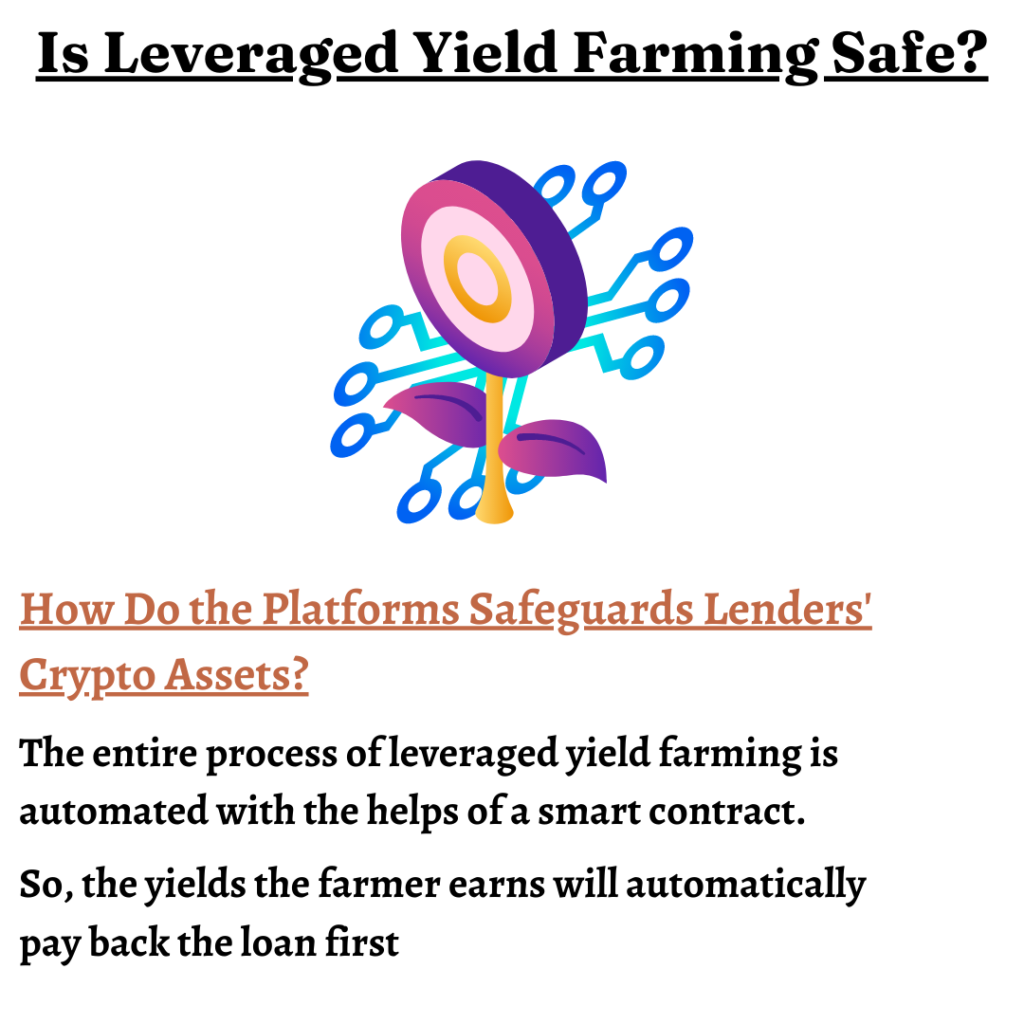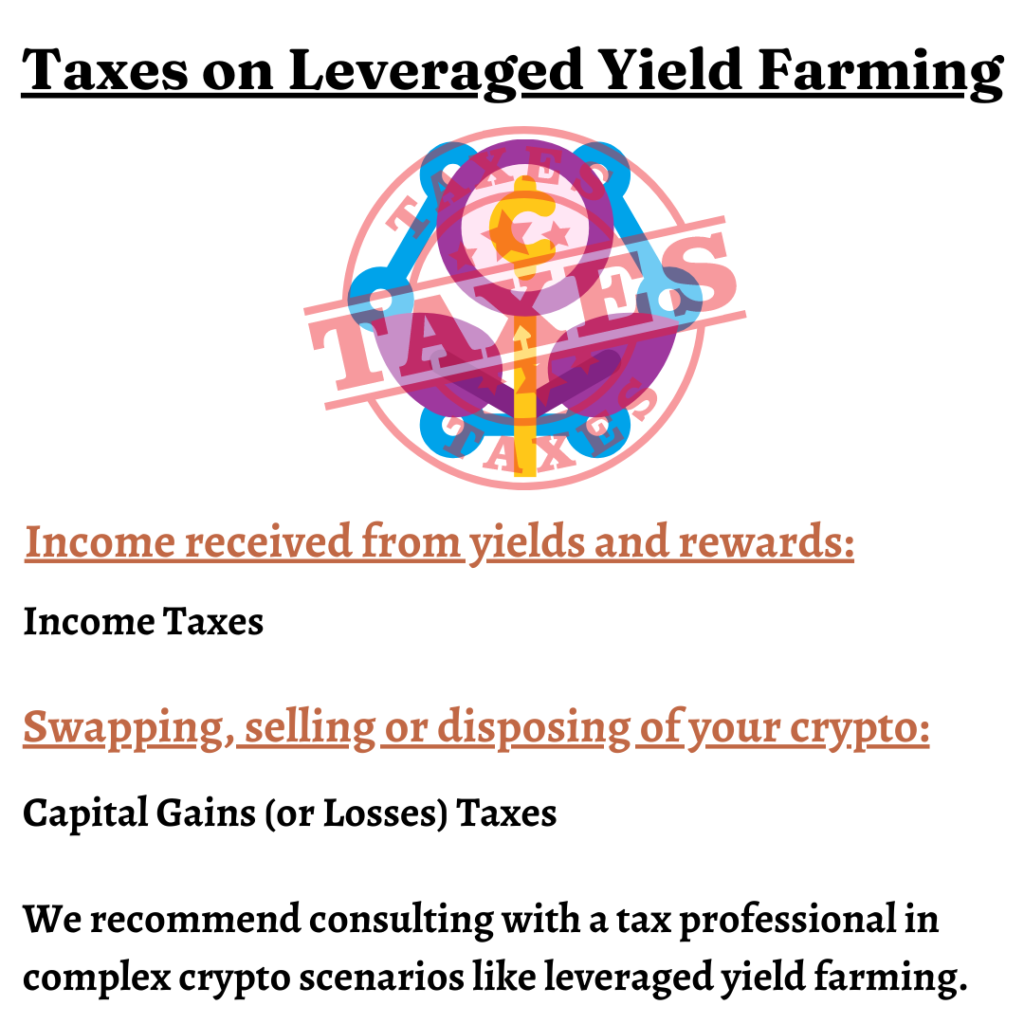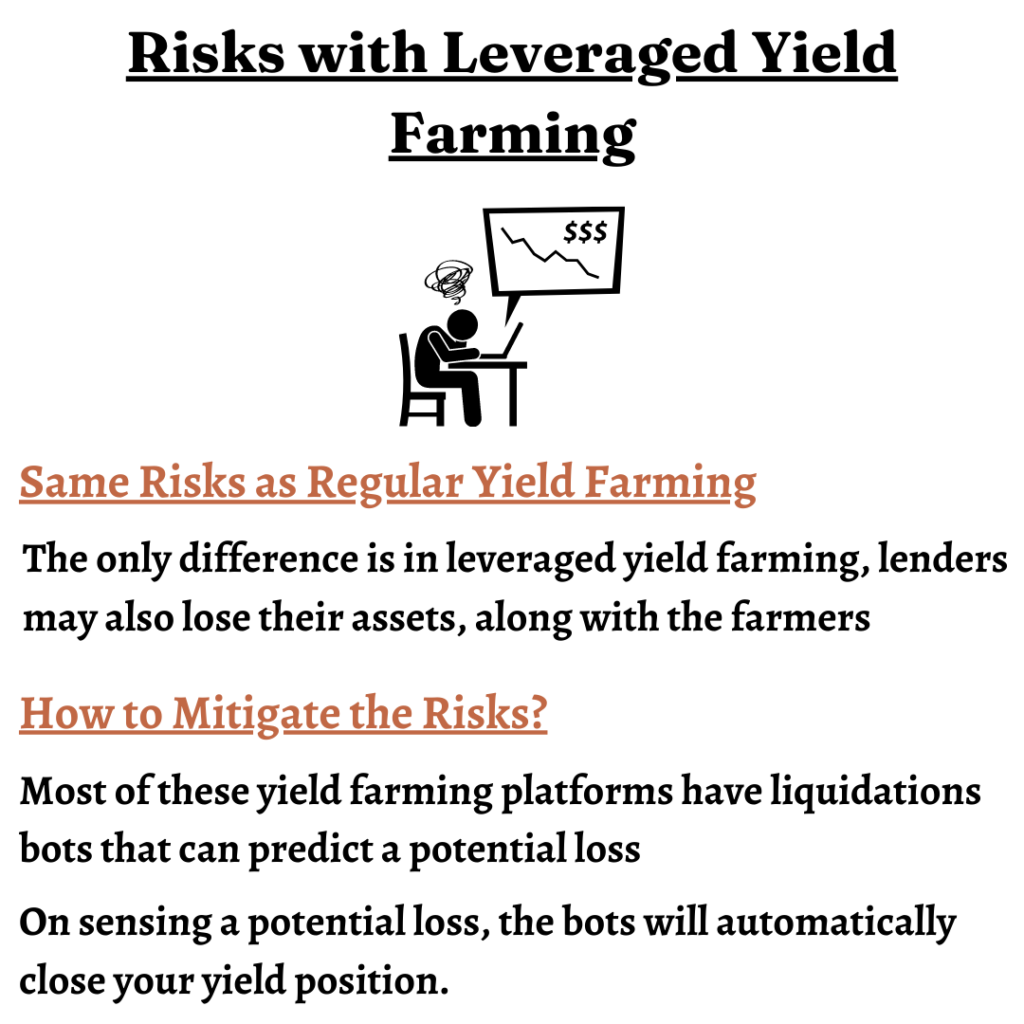Leveraged Yield Farming: Why Settle for Mediocre Returns
Leveraged yield farming is when you stake, lend or provide liquidity to a DeFi platform with borrowed crypto assets to earn higher returns than usual.
It’s a consequence of the growing DeFi economy and its users trying to optimize returns and APYs to the fullest.
Putting your crypto in a leveraged yield farming protocol is pretty straightforward. It only takes a few clicks. But the underlying mechanism of how it all works is equally complex and complicated.
That’s why, in this article, we’ll discuss:
- What is leveraged yield farming, and how does it works
- Its tax consequences
- Risks associated with leveraged yield farming
What is Leveraged Yield Farming?
Before we explain what it is, you should know how regular yield farming works. It’s pretty straightforward. You put your crypto in a DeFi protocol and in return, receive rewards.
In leveraged yield farming, you use your crypto assets as collateral to borrow more crypto that you can then put into different DeFi protocols to earn way higher returns.
How Does it Work?
To understand how this works, first, we must understand a few concepts that you may or may not be familiar with.
For example, undercollateralized loans.

Unlike regular crypto loans, undercollateralized loans allow you to borrow 1.5-6 times more than your collateral’s value.
Usually, regular crypto loans offer you loans with 1x or 2x leverage.
1x means no leverage. So, for instance, if you use 1 ETH as collateral, you’ll only be able to borrow 0.5 ETH, whereas 2x means you can borrow as much as your collateral’s value.
Next is asset utilization.
Every lending pool has a certain percentage of asset utilization. To explain what it is, check out this example –
A lending pool has 100 ETH.
In a regular crypto loan scenario, if a borrower has 10 ETH worth of collateral, he can only borrow 10 ETH.
So, the asset utilization would only be 10%.
However, in an undercollateralized loan scenario, the borrower can borrow up to 50-60 ETH with the same collateral.
The asset utilization now would be 50-60%.
But how is it beneficial to the lenders?
Well, the more the asset utilization, the more interest they earn.
That’s why leveraged yield farming is a win-win for both lenders and farmers. Lenders can earn more interest on their crypto, while farmers can borrow more than their collateral and earn higher yields.
For instance, if someone has 1 ETH, they can use it to borrow 5 or 6 ETH that they can then yield farm to earn higher returns than if they would have just used their 1 ETH.
Is it Safe?
Yield farming is definitely not risk-free – more on this later in this article. But is it safe?
After reading how leveraged yield farming works, we bet the first thought you have is how are the lenders’ funds secured?

Well, most of what we discussed is the underlying mechanism of how it all works. In practice, most of it is automated with the help of a smart contract.
So, the yields farmers earn from borrowing crypto and using it to stake, lend or provide liquidity to DeFi protocols will automatically pay back the loan. And what remains is what they actually earn.
Some platforms even offer further customization based on risk profile, investment capacity, APY preferences, etc.
Automating this complex procedure safeguards the lender’s assets while making it extremely easy for the farmers. To start, all you have to do is open a yield position on one of these platforms.
AQRU is one such platform.
So, coming back to the original question – is it safe?
Yes, in the sense that it takes measures to safeguard the interest of lenders and farmers.
Taxes on Leveraged Yield Farming

Yield farming is a combination of multiple DeFi activities and practices, but mostly all of them have similar tax consequences.
So, for example, liquidity pools taxes, staking taxes and yield farming taxes all work largely the same way. Rewards received from these practices are liable for income tax.
On the other hand, we know that crypto loans are tax-free unless liquidation happens.
So, you borrow crypto, which is not a taxable event, and put it into a DeFi protocol. Then you pay income taxes on the yields you earn.
The complications start when you realize that swapping your crypto for a token that represents participation may trigger a taxable event.
Why? Because you’re essentially disposing of your crypto when you’re swapping it for that token.
If you’re getting into something as complex as this, you should consult a tax professional who can guide you through the entire process. The last thing you want is a tax audit because you didn’t correctly report your crypto taxes.
Risks of Leveraged Yield Farming
The risk of leveraged yield farming is not any different from regular yield farming. The only difference is that when you compound different DeFi activities, the risks are magnified.

The biggest risk is still volatility and how it can cause liquidation and impermanent loss.
Most of these platforms have liquidation bots. Based on numbers, analytics and programming, these bots can predict a potential loss.
How do they do it?
They analyze the ratio of what you’re earning from yields and what you need to pay back. If it’s highly imbalanced, the bots will automatically close your yield position and transfer the remaining funds to the lender and farmer before it’s too late.
At the end of the day, yield farming is a high-risk investment strategy. So, only put what you don’t mind losing
Is Leveraged Yield Farming Worth it?
As you can imagine, leveraged yield farming is best suited for veterans who have extensive knowledge and experience in this field.
If you’re a beginner, getting into this may not be the best use of your time and money, and to be realistic, you’ll most probably lose money.
So to answer if it’s worth it or not, It depends.
It depends on what you want, how much risk you’re willing to take and how much you’re willing to lose.